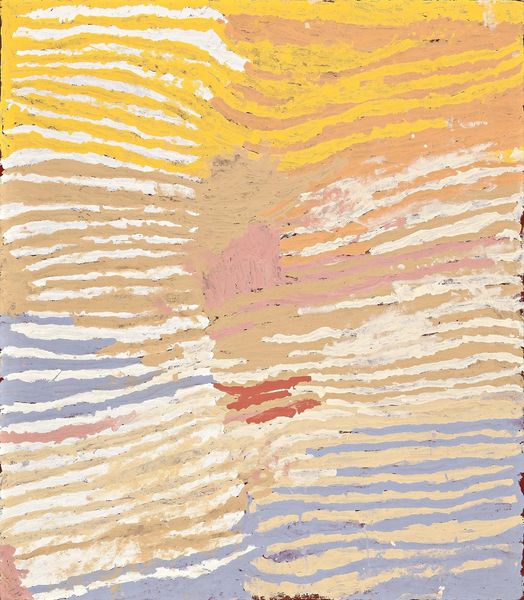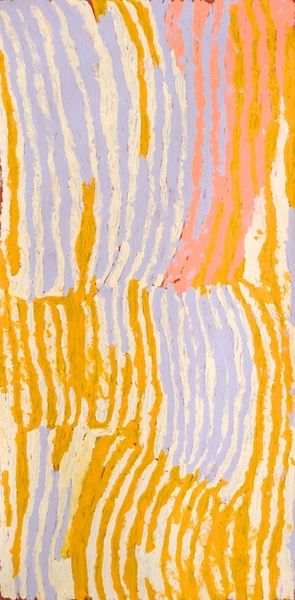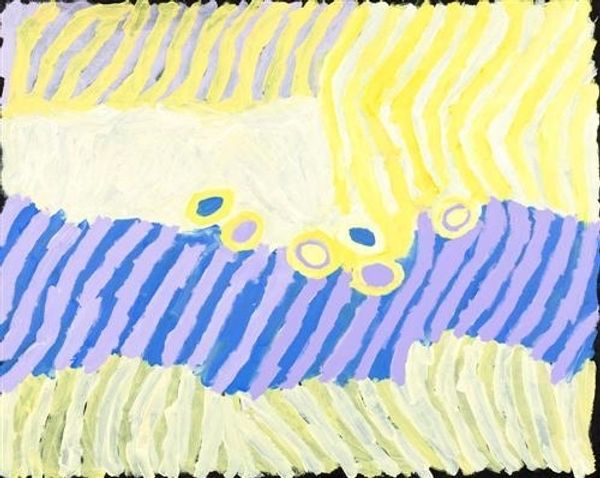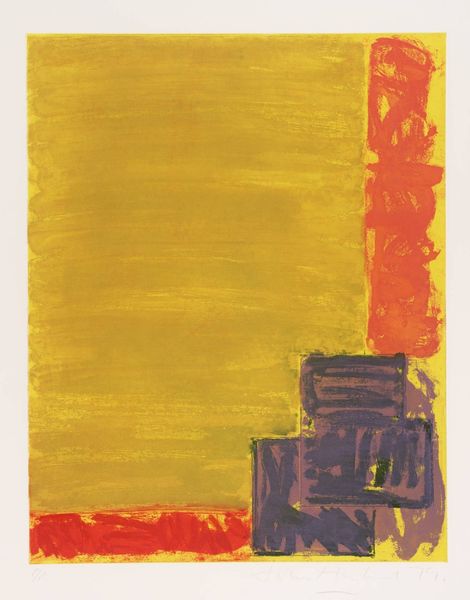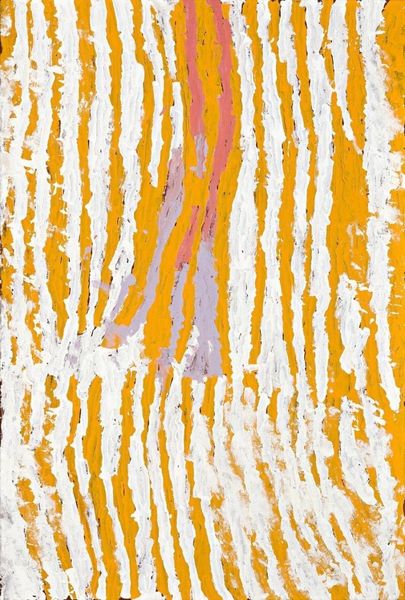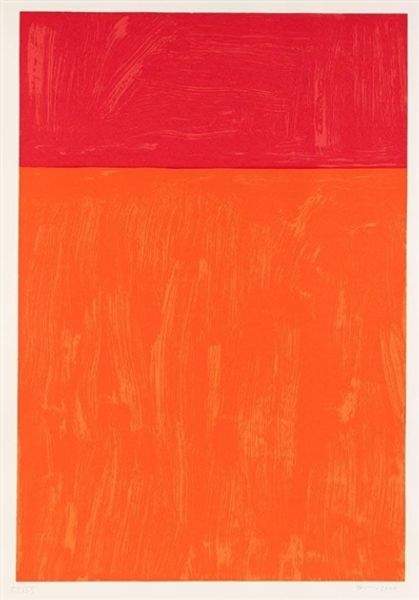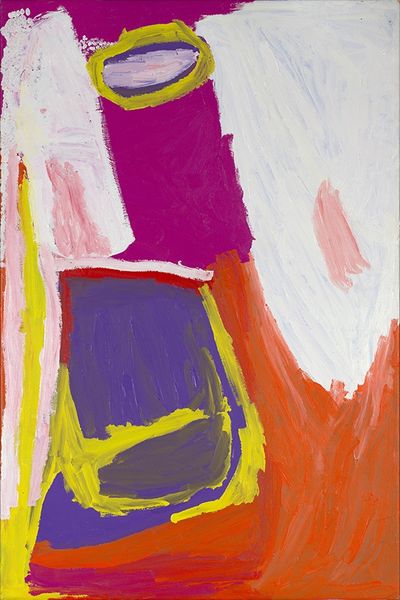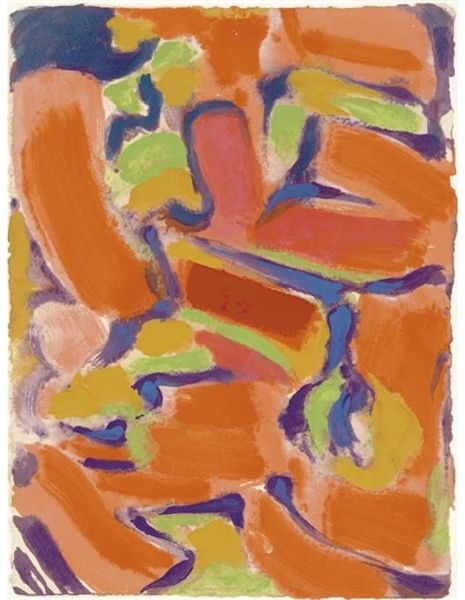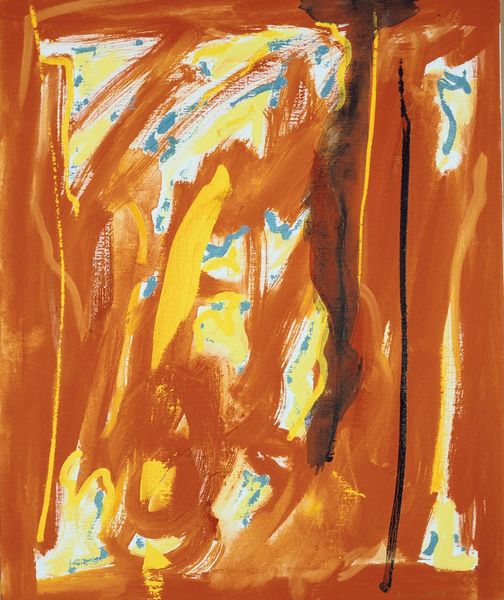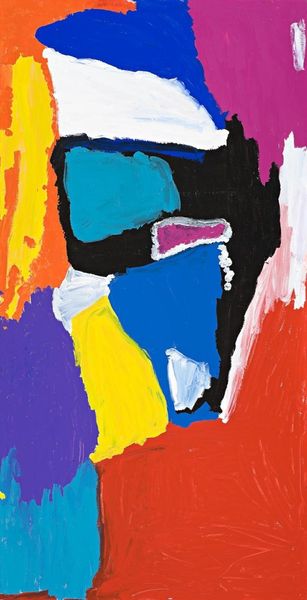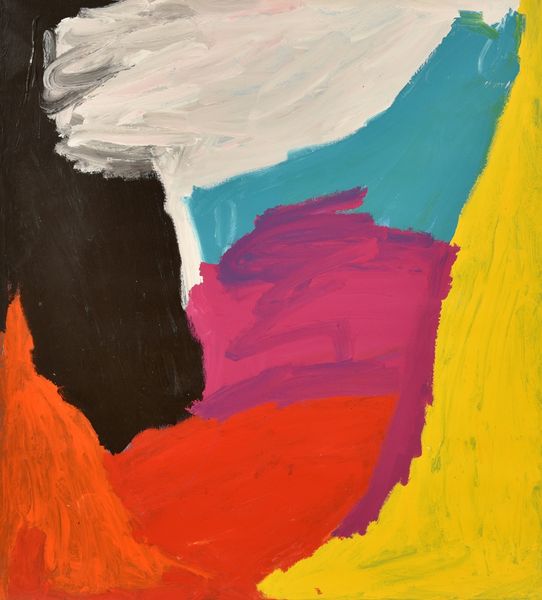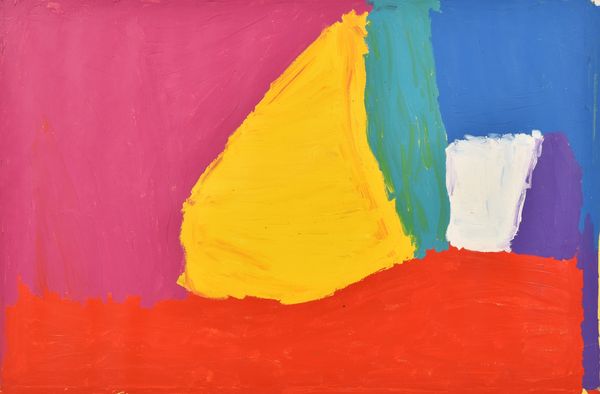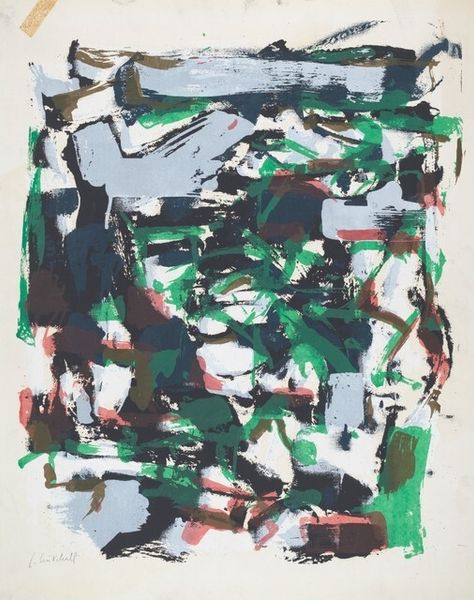
painting
#
abstract expressionism
#
contemporary
#
painting
#
geometric pattern
#
abstract pattern
#
organic pattern
#
abstraction
Copyright: Makinti Napanangka,Fair Use
Curator: Let’s turn our attention to this “Untitled” painting by Makinti Napanangka, created in 2009. She was a prominent figure in the Indigenous art movement in Australia. Curator: My initial reaction? I'm struck by the visual rhythms established through horizontal lines and how the interplay of color and texture creates a very distinctive compositional arrangement. The chromatic contrast certainly pulls you in. Curator: Indeed. Napanangka, a member of the Pintupi tribe, began painting later in life. Her work often reflects her deep connection to her ancestral lands. Understanding the conditions in which these paintings were made is very important; this wasn't high-art-world production. These artworks functioned, for both maker and community, as memory aids of place, Law, and personal lived experience. Curator: I'm also observing a clear contrast between the more ordered geometric left side with those lovely radiating, softer colors. And those vibrant, hot earth-tone shades draw me in too. Semiotically, it evokes a duality—order and chaos. Or perhaps structure meeting raw nature. What's your perspective? Curator: Well, considering this, and much of her work was made using acrylic paints on canvas – quite different from traditional ground painting techniques. What appears to be a somewhat organic form may have actually used synthetic industrial produced colors. Her handling of material and how it reflects socio-economic shifts is part of this bigger history. Curator: That context of adaptation and assimilation brings even greater depths to these deceptively "simple" abstract gestures. I had focused primarily on form: color, line, and balance and tension of the pictorial space. I wasn’t paying enough attention to the larger history it embodied. Curator: It’s vital to recognize the impact of global forces on artistic production even within seemingly isolated Indigenous communities. Ultimately, the painting represents both tradition and adaptation and can tell us more about human industry. Curator: Absolutely. By understanding this artwork through both formal examination and material consideration, we are gaining a much richer view than either analysis can give alone.
Comments
No comments
Be the first to comment and join the conversation on the ultimate creative platform.
